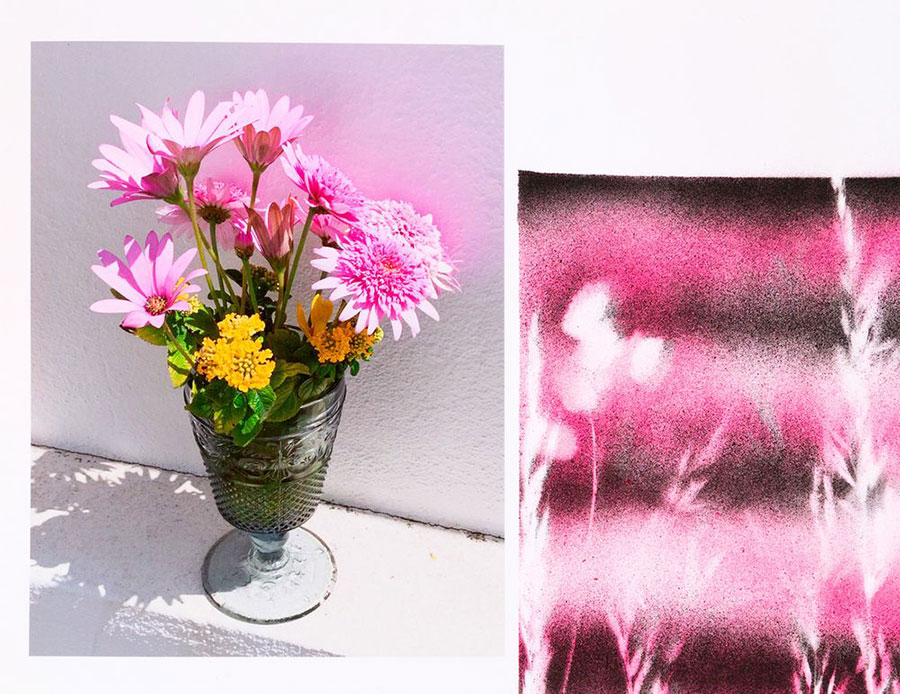Curated by: Pauline Foessel
In this exhibition, we discover two new series developed by Italian artist Filippo Minelli. Two series that prompt us to examine Hilary Putnam’s fact/value dichotomy. Facts are true and therefore objective, demonstrable: wildflowers grow in fields. Values are judgements and so subjective and individual: wildflowers are beautiful. In his Landscape series, Minelli explores and enjoys nature and its components. Minelli lives on the Portuguese–Spanish border. There he collects the trappings of border areas: stones, flowers, wheat stalks but also photographs, gathering as he wanders. He makes his finds his own and brings them a new dimension, positioning and repositioning them on canvas or paper. He paints negatively, seeking only outlines. He deliberately makes nature his own and offers it a new value: possibly sentimental and certainly aesthetic. He asks everyone to look again at the everyday items we tend to ignore. He creates his own oppositions: he combines nature and urban elements in the same visual space and has fun with their parameters. Between traces of nature and photographs of locations, urban components, he finds a certain beauty and creates new values. Whilst we all overlook these everyday facts, Minelli places them at the centre of his art, demanding our attention. Here we can see the concept of borders, which is recurrent in Minelli’s work: geography, politics, history. Here the border is visual too: juxtaposing painting, stencilling and photo collaging. Minelli erects the borders between materials and showcases a dialogue of concepts. He continues to explore that idea in his video series. It emerged from a trip to Bhutan. As in the above series, Minelli collects objects, which may be sacred. He also questions the value of those objects and the locations beneath his feet. Remnants of temples, what is their value, do they have one? If so, who gave it to them? Was it more than one person, when in time? Minelli decides to answer the underlying questions in his work subjectively by offering them a new life. He takes the remnants home and produces 3D scans, then paints them virtually and places them back in their landscape, like an archaeologist. He only wants to claim ownership of an image, a moment, as always. His work in this exhibition oscillates between the dichotomy of facts: observing, almost scientifically compiling fragments of nature and traces of the human species. And values: questioning the value of all the objects that surround us, artistically situating them at the centre of new physical and temporal landscapes.

